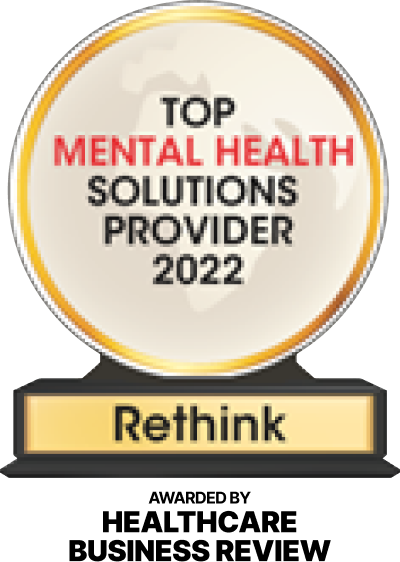Billions of of people around the world are experiencing not only a global health crisis of unprecedented proportions, but also severe economic distress. Vast unemployment amidst the Covid-19 crisis is resulting in enormous financial challenges for many, compounded by mental health difficulties. Losing a job can be emotionally draining, but to do so in our current environment of heightened uncertainty can add additional stressors into the experience. Psychologists often note that such a loss can mimic the grief of losing a loved one. Is it possible to process these difficult emotions–anger, fear, anxiety–while maintaining some measure of inner balance? Resilience is a key component of our curriculum. Resilience is “the ability to navigate through adversity, to effectively adapt to change and thrive.” It means having to cultivate a sense of calm, clarity and stability, even when things are stressful and overwhelming.
To be clear, resilience is not simply about bouncing back from adversity; it’s about dealing with disruptive forces while adapting with integrity in response to changing circumstances, eventually leading to the experience of thriving. Adaptive resilience is a skill that can be deliberately cultivated and developed in the face of chronic negative stress and constantly increasing demands, complexity and change.
Mindfulness as a First Step to Build Resilience
Being aware of the present moment is key. When we practice mindfulness we become aware of our internal response to situations. A sense of curiosity and kindness about what we’re going through allows us to better cope with it.
When there are disruptive forces at play or high-stress situations at the workplace, for example, we can get lost in the intensity and resist what is happening. Or we can cultivate the ability to engage openly with the unexpected and adversity. We can say “yes, I am aware this is happening.” Saying “yes, I am aware” affords us the opportunity to regain a sense of balance and become open to possibilities.
Mindfulness also allows us to choose how to take action and respond to a situation. By exercising introspection on the feelings of both success and failure, we can practice observing ourselves, without attachment and without aversion. We are able to observe thoughts and emotions and fully experience them, but we don’t attach our identities to them. Rather, we let the experience pass through our awareness. Adaptive resilience requires much more than learning new techniques and skills or different systems of thinking. It requires a shift in our ways of being, the way we see and engage with the world around us. When we shift from obsessing about a problem to assessing our response to the problem, then we can open ourselves to possibilities and solutions. To be adaptively resilient is to continuously question conventional thinking, actively looking at things differently.
How We Talk to Ourselves When We Experience a Setback Has an Impact on the Way We Navigate it
On an individual level, the stories we tell ourselves following a situation have a profound impact on our lives. Martin Seligman, a researcher who focuses on learned optimism, calls this process an explanatory style: how we talk to ourselves when we experience adversity. People who respond to setbacks as an indication of personal failure have a pessimistic explanatory style. They allow the setback to pervade all areas of their lives. In contrast, people who are optimistic see the setback as arising from certain conditions outside of their control. It doesn’t define their self worth and the situation is impermanent. At an organizational level, resilient teams are just as important to businesses as resilient individuals, but while individual resilience is built independently, team resiliency must be carefully cultivated by leadership. After an adverse event, how are team leaders and managers responding? Are they providing their teams a forum for careful reflection and debriefing? Are they reframing the challenges as opportunities to learn? The chosen explanatory style will either support or weaken the resiliency of their teams.
Practicing Resilience at Work Is Possible, Even in High-Stress Environments.
Whether it’s an entrepreneur who successfully reached her quarterly goals after experiencing numerous financial challenges, or a parent who adapted to his new work situation after he unexpectedly transitioned to remote work while managing full time childcare, resilience is often identified as one of the factors that help individuals get ahead. “Building resilience skills in the contemporary work context doesn’t happen in a vacuum. It’s important to understand and manage some of the factors that cause us to feel so overwhelmed and stressed at work,” Rich Fernandez, explains.
Ways we proactively work toward supporting our team in difficult times include:
- Set up times for meditation sessions to help coworkers manage stress and connect with their peers.
- Connect with your colleagues and teams even while working remote.
- Schedule regular team check-ins to meet by video.
- Encouraging people to connect by chat or for remote “coffee” time for people to just simply get together.
With increasing demands faced by businesses globally, our current work culture is filled with stress and burnout. So how can we develop resilience and stay motivated in the face of chronic negative stress and constantly increasing demands, complexity and change? In addition to practicing mindfulness techniques at the workplace (which are highly useful for managing stress, improving collaboration and enhancing well-being), we can increase resilience by compartmentalizing our cognitive tasks to optimize the way we process information. It helps to create dedicated times in the day to do specific work-related activities and not others. We also suggest balancing work activity with breaks to help promote greater energy, mental clarity, creativity and focus.
We look forward to continuing navigating these times with you and your team!










